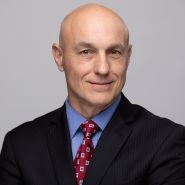New 101 Guidance: Back to the Future?
- January 10, 2019
- Article
Associated People
In its new 101 Guidance, the USPTO explains that a claim reciting “a judicial exception is not ‘directed to’ the judicial exception if the judicial exception is integrated into a practical application of the judicial exception. ” The new guidance states that the “Supreme Court has long distinguished between principles themselves (which are not patent eligible) and the integration of those principles into practical applications (which are patent eligible).” This renewed emphasis on the requirement for a practical application reminds us of a 1994 Federal Circuit case, which stated:
A close analysis of Diehr, Flook, and Benson reveals that the Supreme Court’s … analysis in each of these cases lies an attempt by the Court to explain a rather straightforward concept, namely, that certain types of mathematical subject matter, standing alone, represent nothing more than abstract ideas until reduced to some type of practical application, and thus that subject matter is not, in and of itself, entitled to patent protection.…
Coexistent with the usage of these terms has been the rule that a person cannot obtain a patent for the discovery of an abstract idea, principle or force, law of nature, or natural phenomenon, but rather must invent or discover a practical “application” to a useful end…
This older case is In re Alappat (Fed. Cir. 1994), which was a high-water mark for patent eligibility that took us down the road to the now-defunct “useful, concrete, and tangible result” test and the State Street Bank decision (Fed. Cir. 1998) and was superseded by the Supreme Court’s Bilskiand Alice decisions. Understandably, the new guidance avoids citation to In re Alappat while retooling another formulation of the practical application test. It will be interesting to see whether the CAFC will accept this attempt to “go back to the future”.
Recent Publications
5 IP Rules to Know to Protect Your Business in the United States (article in French)
Coaching INPI Newsletter










 Counseling & Strategic Advice
Counseling & Strategic Advice IP Transactions
IP Transactions Litigation
Litigation PTAB Proceedings
PTAB Proceedings Start-Up
Start-Up Technology Transfer
Technology Transfer Trademark & Designs
Trademark & Designs U.S. Patent Procurement (Application Drafting & Prosecution)
U.S. Patent Procurement (Application Drafting & Prosecution)








